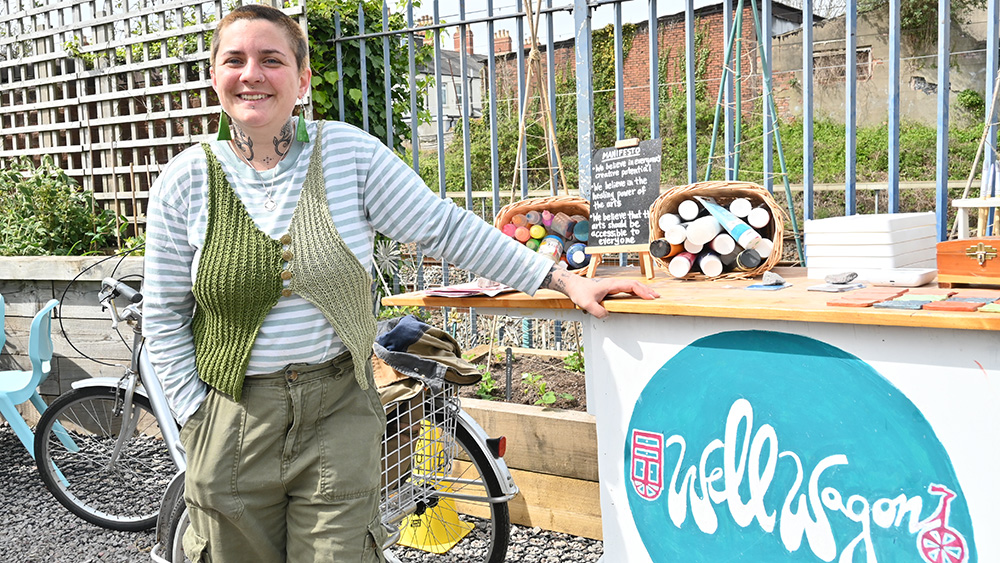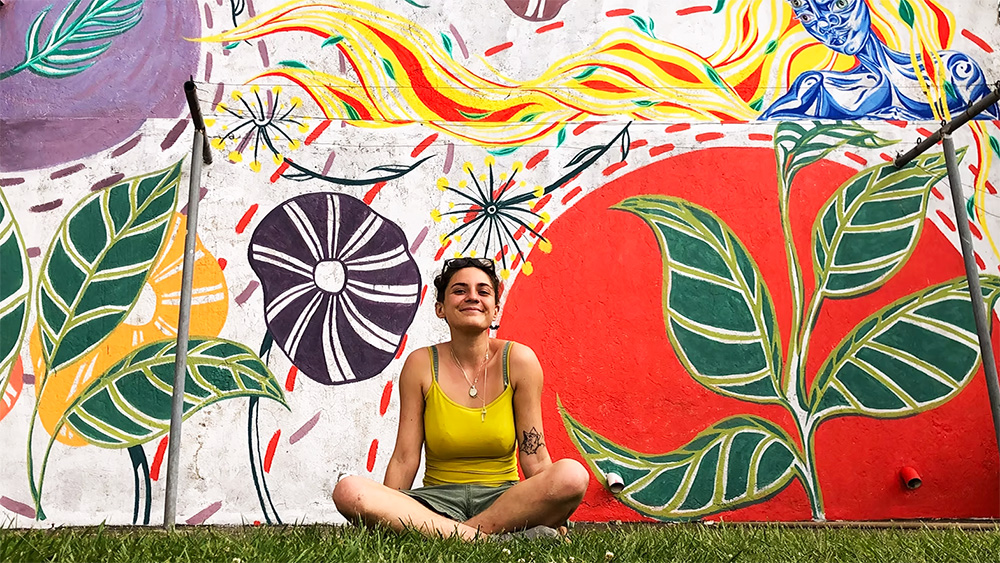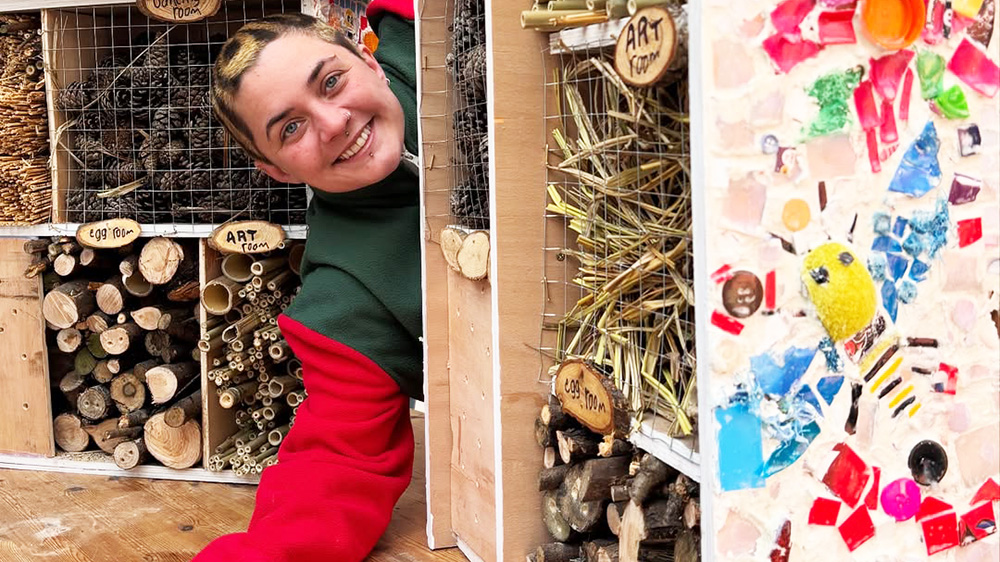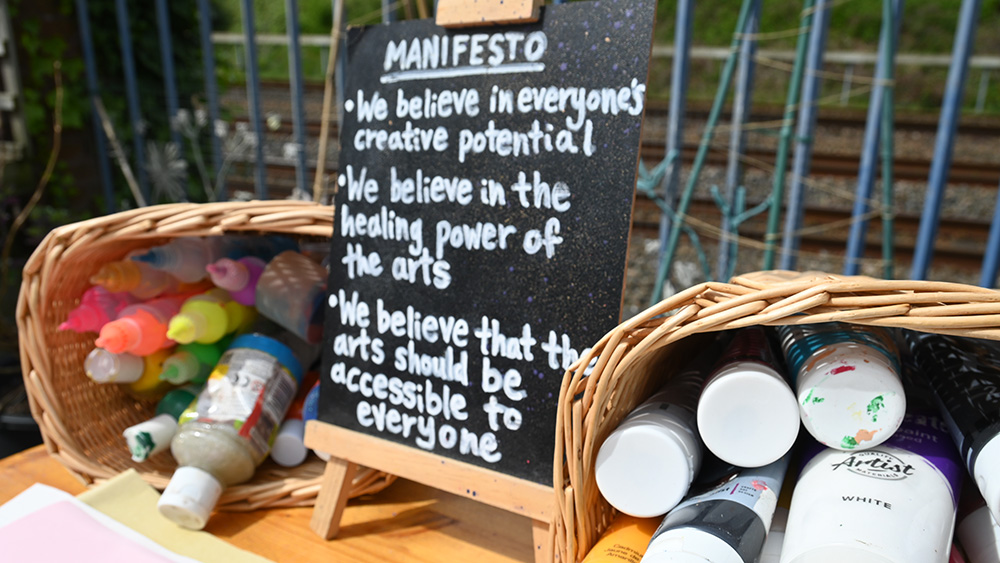In a fast-paced, increasingly lonely world, how does the artist Anna use a tricycle to deliver creativity and healing?

On the streets in Cardiff, a brightly colored tricycle often appears. It not only carries paintbrushes and craft materials but also delivers care and healing. An artist has turned the tricycle into a mobile art workshop, providing a space for people to express themselves through art.
The inspiration for the tricycle came from the lockdown during the COVID-19 pandemic, when social interactions were limited and many people faced mental health challenges. After learning about people’s needs, Anna and her father designed and assembled the tricycle, making it more mobile. She hopes to use the tricycle to foster connections between people and the community and provide them with spiritual healing.
“A lot of people are suffering from mental health issues during Covid. I was thinking of ways I could do and share them,” says Anna Amalia Coviello, the founder of Well-Wagon, “but we can only meet people outdoors, I must do it outdoors. I thought of having a business on a tricycle so I can move.”
Anna graduated from the Creative and Therapeutic Arts program at the University of South Wales. During her time at university, she received systematic training in art and creative therapy.

According to Mind, art and creative therapies are a treatment that involves creative activities. It helps people express and process emotions through different art forms, such as painting, music, and dance.
“It’s all with mindfulness and therapeutic principles. We explore how to tackle our mental health and well-being.” Anna says, “Anyone can enjoy something creative, whether it’s gardening, writing, or painting. Without pressure or judgment.”
Anna managed the Well-Wagon while holding a full-time job in the past five years. This year, she transitioned into freelancing and is now running Well-Wagon full-time by herself.
“I don’t have any sponsors. It’s all self-funded,” Anna says, “It’s hard to find someone to understand me and what I do. Because it’s not a concept that everyone has seen before.”
“But the most hard thing is to tackle multitasking. I do the administration, the communication, the marketing, buying the materials, reaching out to people and taking videos,” Anna says.

She says that artistic creation is passion, and using art to heal others is the original intention and driving force behind her work.
“I never stop working. Sometimes I get an idea at midnight, I write it down right away. Or sometimes I am writing emails in the middle of the night,”Anna says, “The ideas that I come up with are creative ideas that I want to share.”
Anna’s sessions are open to everyone, with the participants varying depending on the location and purpose. Workshops for the LGBTQ+ community and the deaf are regular weekly events. In addition, she has hosted many different types of programs. Such as a creative treasure hunt at the Cardiff Museum, a painting session with endangered animals for kids and some creative workshops for people with dementia.
According to the research from National Institute for Health and Care Excellence (NICE), artistic and creative therapies may help address mental health issues such as schizophrenia, amnesia and depression. It allows people to express feelings that cannot be explained in words, which helps to resolve painful feelings or traumatic experiences.
This form of therapy does not require any artistic skills. It aims to create a safe environment for participants to understand things and learn about themselves through making art. It can help people talk about complex emotions or difficult experiences while also offering a chance to connect with others.
For art therapists, it is both a responsibility and a challenge. “Sometimes I work with vulnerable people, like people that have anxiety, suicidal, or have dementia. I need to create an inclusive and welcoming environment for them,” Anna says, “I hope they feel comfortable making art. That’s a bit of a challenge, but it’s also really rewarding.”

Anna wants to help people with a different art experience. “The common understanding is that only creative people can do art. But I want to share that everyone has the capability to do it,” she says, “Just breaking down those barriers is not just for a product but for mental health processes, and it’s for our well-being.”
This year is the first year for Anna to operate Well-Wagon full-time. She says that she has both public events and private bookings scheduled for the next two months.
But for an artistic freelancer, she needs more funds to sustain the project. There is still uncertainty about the future, so she must constantly seek new opportunities.
Her goal is to create a physical space, “I’d like to have a space that I so I don’t have to move, sort of like an art cafe of sorts. So that is like way in the future. I think it will be true in the future, ”Anna says.

